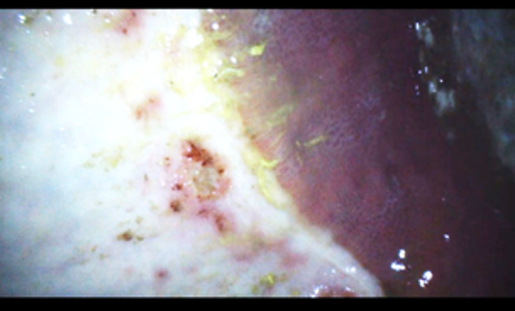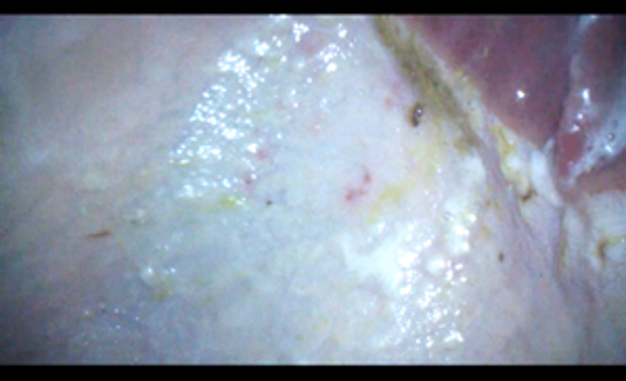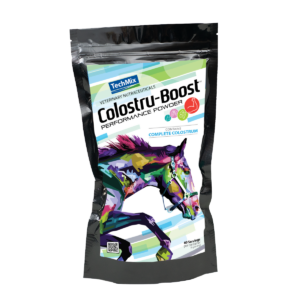June 20, 2025
Clinical Veterinary Perspective-Ulcers
Equine Gastric Ulcer Syndrome (EGUS) is on a lot of my clients’ minds. Most have heard of the condition, many suspect their horse may have them some or all the time, and many are treating the horse with products to treat or prevent them. The symptoms can be numerous, or none at all.


Initial findings After 7 days
If they have classic symptoms, they might show decreased appetite or weight, be “cinchy” when getting saddled, they might be cribbers in the stall, they might be high anxiety horses, be reluctant to work, or they might posture to stretch their bellies or even colic from time to time. For a definitive diagnosis, they would have to undergo gastroscopy, which can be cost prohibitive for many people. Therefore, an owner may choose to select a dietary supplement that has some suggested benefit for treating or preventing EGUS. Or their veterinarian may choose to prescribe a medication, so that the symptoms can be monitored for a positive response to treatment, and therefore the treatment itself can serve as a diagnostic tool.
Many factors play a role in the formation of gastric ulcers in horses, creating numerous intervention points along the cascade of events leading to them. In my experience, this is why several strategies and product options can lead to successful outcomes in treatment. For example, the extreme acidity of the horse’s stomach plays a role; if you increase the pH of the stomach for a while, with an antacid or buffer product, the body can get a chance to heal. If you can administer a medication that will coat or stick to the ulcer and protect it from the acid, it could also get the chance to heal. If the horse is constantly on an NSAID like phenylbutazone— a known cause of ulcers—it could be discontinued for a time to allow the ulcers to heal. If sporadic high concentrate diets with minimal forage is what the horse has been getting and now has ulcers, dietary management can be improved to provide constant, free-choice forage and a less starchy concentrate can be selected. If the horse is nearly constantly stalled and now has ulcers, it can be turned out to engage in a higher percentage of normal horse behavior and socializing each day. Numerous nutraceutical interventions have been promising as well, some with active ingredients or combinations of them such as hyaluronic acid, aloe, calming amino acids and/or vitamin blends, and bovine colostrum.
I have first-hand experience with bovine colostrum in treating equine gastric ulcers, having conducted field evaluations on the effectiveness of TechMix’s Colostru-BoostTM line. When my clients want a nutraceutical, non-pharma option for ulcer treatment and prevention, Colostru-Boost is the one I can personally assure is effective.
